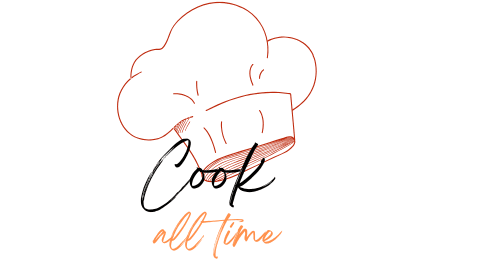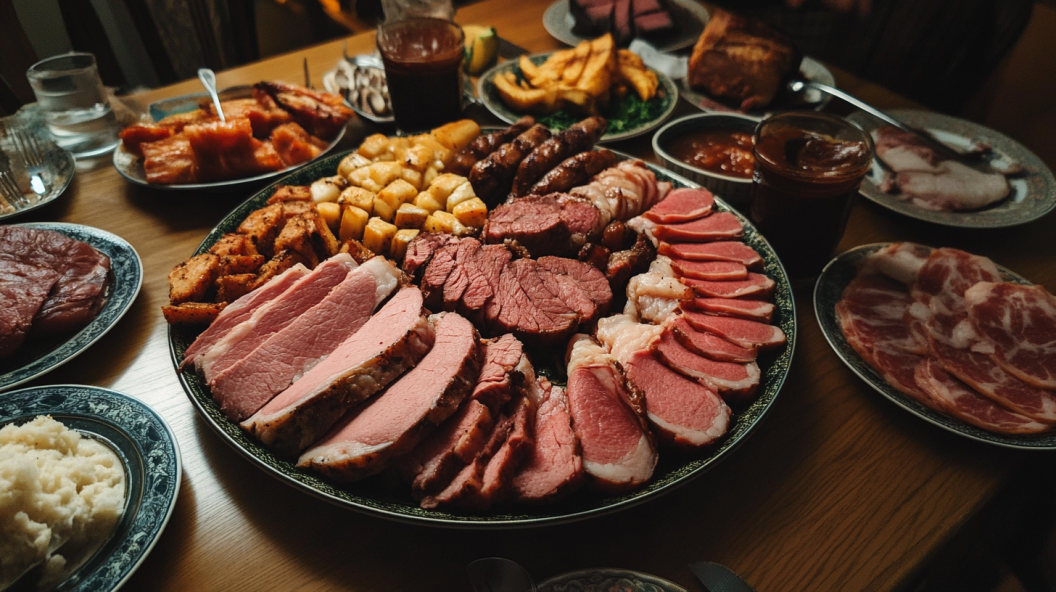Smoking meat is an age-old technique that transforms ordinary cuts of meat into flavorful, tender, and mouthwatering dishes. Whether you’re a seasoned pro or just beginning, understanding the intricacies of smoked meat recipes will help elevate your culinary skills. In this guide, we will walk you through the key elements of smoking meat, from mastering the smoking techniques to perfecting your wood selection. The knowledge shared here will set you up for success, ensuring that your smoked creations are nothing short of extraordinary.
As you embark on this flavorful journey, you will discover the essential equipment you need, the best meats to smoke, and the crucial steps for seasoning, brining, and smoking your meats to perfection. Let’s dive into the art of smoking and uncover the secrets behind great smoked meat recipes.
Table of Contents
The Art of Smoking Meat
Smoking meat is a delicate balance of heat, time, and flavor. It’s not just about tossing a piece of meat on a smoker and hoping for the best. The best smoked meat recipes require careful attention to detail, a keen understanding of the smoking process, and the right equipment. Smoking meat is as much about technique as it is about patience. However, with the right tips and tools, you can master this art and create mouthwatering dishes that will leave everyone asking for more.
1. Understanding Smoking Techniques
Smoking meat is a process that imparts a unique flavor and tenderness to the meat. It’s important to understand the different smoking techniques, as they will directly impact the taste and texture of your final product.
When you begin experimenting with smoked meat recipes, it’s crucial to know the difference between cold smoking and hot smoking. Both methods offer distinct benefits, but they are used for different purposes.
Cold vs. Hot Smoking
- Cold Smoking: Cold smoking involves smoking the meat at temperatures below 90°F (32°C), typically around 60-80°F (16-27°C). This method doesn’t cook the meat directly but imparts a smoky flavor. Cold smoking is commonly used for items like fish, sausages, and cheeses. It’s essential to note that cold smoking requires long exposure to smoke, so it’s typically done over several days.
- Hot Smoking: Hot smoking, on the other hand, uses higher temperatures (usually between 200-250°F or 93-121°C). This method both smokes and cooks the meat. Hot smoking is great for meats like brisket, and chicken, as it allows the flavors to develop while cooking the meat to tender perfection.
Understanding the right technique to use will set you on the path to smoking success.
2. Essential Equipment
Having the right tools is key when it comes to smoking meat. You need to make sure that your equipment can handle the demands of the smoking process. Whether you’re preparing a simple smoked meat shoulder or a complex brisket, the right equipment will make all the difference.
Smokers, Thermometers & Accessories
When selecting the equipment for your smoking journey, here’s a quick rundown of essential items:
| Equipment | Purpose |
|---|---|
| Smoker | The heart of the smoking process, choose between electric, charcoal, or wood smokers. |
| Thermometer | To monitor both the smoker and internal meat temperature for perfect cooking. |
| Meat Probe | Helps track the internal temperature of the meat to avoid overcooking. |
| Wood Chips or Chunks | Adds the desired smoky flavor to the meat. |
| Water Pan | Keeps moisture in the smoker, preventing the meat from drying out. |
Investing in quality equipment will ensure consistent results every time you smoke meat.
3. Best Meats for Smoking
Not all meats are suited for smoking, and choosing the right cut is essential for achieving the best flavor and texture. When exploring smoked meat recipes, it’s important to understand which meats are ideal for smoking.
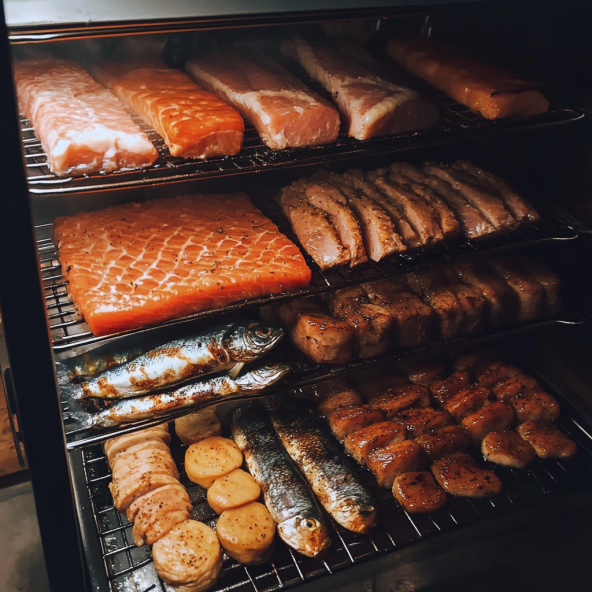
Beef, Poultry, and Fish
- Beef: Cuts like brisket, ribs, and chuck roast are excellent for smoking. The long cook time allows for the fat to render and the meat to become tender while absorbing the smoky flavor.
- : Chicken and turkey are perfect for smoking. With the right technique, smoking can give poultry a crispy skin and juicy interior.
- Fish: Fish, such as salmon and trout, takes on a delicate smoky flavor when smoked properly. Cold smoking works especially well for fish, as it preserves its texture and moisture.
When selecting the meat for your next smoke session, remember that fattier cuts tend to yield more flavorful and tender results.
4. Perfecting the Brine & Rub
One of the most important steps in preparing smoked meat recipes is seasoning your meat correctly. The brine or rub you choose can make or break your dish.
Essential Seasonings & Marinades
- Brine: Brining is essential for meats like poultry, as it helps retain moisture during the smoking process. A simple brine consists of salt, sugar, and water. You can also add herbs and spices to enhance the flavor.
- Rub: Dry rubs are a mixture of spices, herbs, and sometimes sugar, applied to the meat before smoking. Popular spices include paprika, garlic powder, onion powder, brown sugar, and chili powder. The rub forms a flavorful crust on the meat as it smokes.
A great rub can give your smoked meats that perfect balance of salty, savory, and spicy flavors.
5. Wood Selection Guide
The wood you choose to smoke your meat with plays a significant role in the flavor profile. Different types of wood lend different aromas and tastes to your dishes.
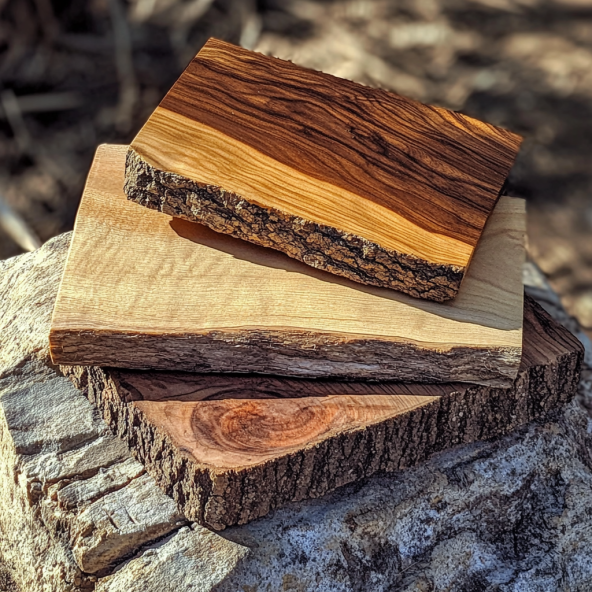
Choosing the Right Wood for Flavor
| Wood Type | Flavor Profile | Best For |
|---|---|---|
| Hickory | Bold, smoky, slightly sweet | beef, ribs |
| Applewood | Mild, sweet, and fruity | poultry, fish |
| Oak | Strong, smoky, balanced flavor | Beef, brisket, lamb |
| Cherrywood | Sweet, fruity, and mild | Poultry, ribs |
| Mesquite | Strong, earthy, and intense | Beef, chicken, game meats |
Choosing the right wood for your smoked meat recipes will enhance the final flavor, so select wisely based on your personal preferences.
6. Step-by-Step Smoked Brisket Recipe
Brisket is often considered the king of smoked meats, and for good reason. It requires patience, skill, and the right technique to perfect.
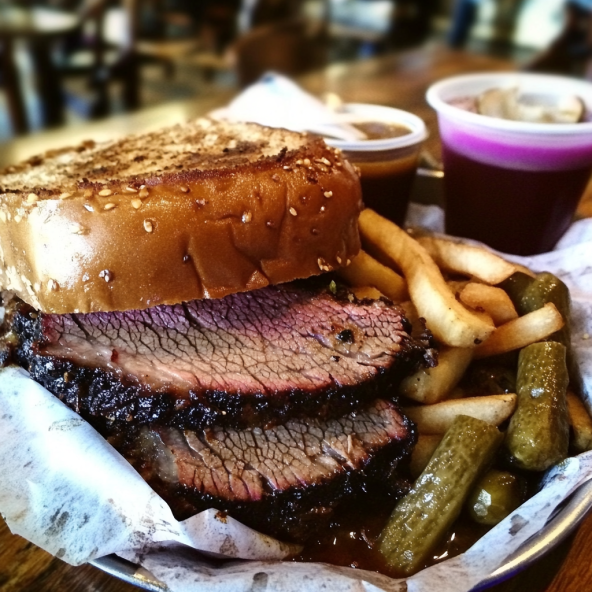
Texas-Style Brisket Mastery
Ingredients:
| Ingredient | Quantity |
|---|---|
| Brisket | 1 whole (10-12 lbs) |
| Salt | 2 tbsp |
| Pepper | 2 tbsp |
| Garlic Powder | 1 tbsp |
| Onion Powder | 1 tbsp |
| Paprika | 1 tbsp |
| Brown Sugar | 1 tbsp |
Instructions:
- Prepare the Brisket: Trim excess fat from the brisket, leaving about 1/4-inch fat cap.
- Season: Mix salt, pepper, garlic powder, onion powder, paprika, and brown sugar. Rub it evenly over the brisket.
- Smoke: Preheat your smoker to 225°F. Place the brisket on the smoker and cook for about 1 hour per pound.
- Rest: Once the brisket reaches an internal temperature of 195°F, remove it and let it rest for at least 30 minutes before slicing.
- Smoked Turkey Breast – A leaner option with a rich smoky taste.
The key to a perfect brisket lies in patience and temperature control.
7. Smoked Chicken Techniques
Chicken can be challenging to smoke because it tends to dry out if overcooked. However, with the right techniques, you can achieve a juicy, flavorful bird.
Juicy & Flavorful Poultry
To achieve juicy, flavorful smoked chicken:
- Brine your chicken beforehand for added moisture.
- Smoke at a temperature of 225°F to 250°F, allowing the skin to crisp up while the meat stays tender.
- Aim for an internal temperature of 165°F for perfectly cooked chicken.
By using these tips and tricks, you will be able to create smoked chicken that rivals any barbecue joint.
8. Smoked Ribs for Beginners
Smoked ribs are a classic favorite, and for good reason. If you’re just starting with smoked meat recipes, ribs might seem intimidating. However, once you grasp the basics, you can achieve fall-off-the-bone tenderness that will impress anyone.
First, it’s essential to choose the right type of ribs. Baby back ribs are generally easier for beginners due to their tenderness. Once you’ve selected your ribs, it’s time to prepare them properly for smoking.
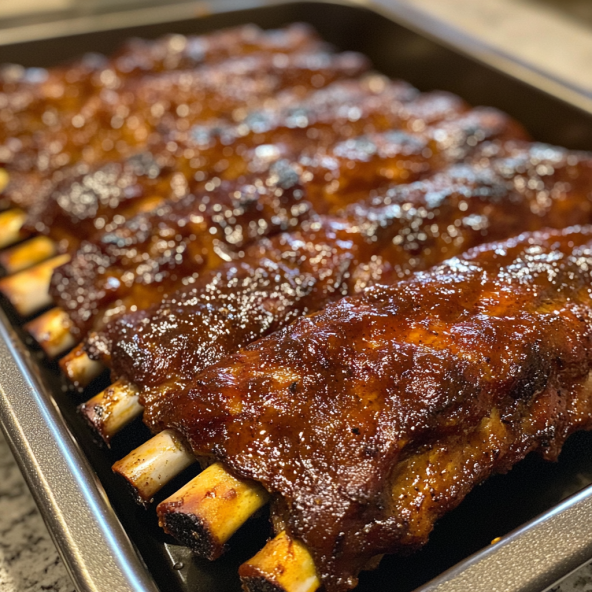
Fall-Off-The-Bone Goodness
To get that perfect smoky flavor and tender texture, you must follow a few key steps. Here’s a quick rundown of the process:
Ingredients:
| Ingredient | Quantity |
|---|---|
| meat Ribs | 2 racks |
| Brown Sugar | 2 tbsp |
| Paprika | 1 tbsp |
| Salt | 1 tbsp |
| Black Pepper | 1 tbsp |
| Garlic Powder | 1 tbsp |
| Onion Powder | 1 tbsp |
Instructions:
- Prepping the Ribs: Start by removing the membrane from the back of the ribs. This allows the smoke and seasoning to penetrate better.
- Seasoning: Mix the brown sugar, paprika, salt, black pepper, garlic, and onion powder. Rub this mixture evenly over the ribs.
- Smoking: Place the ribs in the smoker, setting it to 225°F. Smoke for about 5 hours, checking the internal temperature. You’ll know they’re done when they reach 190°F.
- Resting: Once they’re done, let the ribs rest for 15 minutes before cutting into them.
With these simple steps, you’ll have a plate full of tender, flavorful ribs.
Smoked Turkey Wings
For those looking for an alternative to red meat, Smoked Turkey Wings Recipes offer a delicious, smoky alternative with crispy skin and juicy meat.
9. Smoked Fish & Seafood
Smoking fish and seafood offers a whole new world of flavors. It’s a delicate process, and when done right, it results in tender, flavorful dishes that stand out. Smoked meat recipes often focus on the hearty meats like brisket, but fish and seafood should not be overlooked.
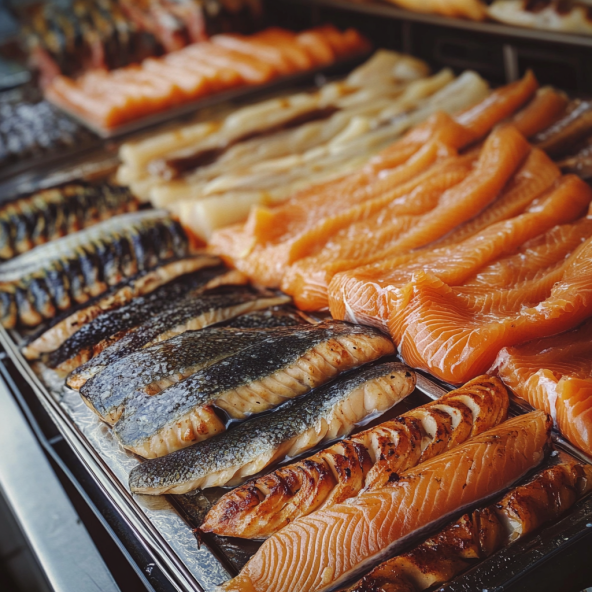
Delicate & Flavorful Options
When it comes to smoking fish and seafood, you must consider the delicate nature of these proteins. Fish like salmon, trout, and mackerel are popular choices. However, even shrimp and scallops can take on a beautiful smoky flavor when smoked properly.
For the best results, here are a few tips:
- Brine: Fish and seafood benefit from a light brine. It helps to keep the proteins moist during smoking.
- Temperature Control: Smoke at a lower temperature, around 180-200°F, to avoid overcooking the seafood.
- Wood Choice: Lighter woods such as applewood, cherry, or hickory complement seafood beautifully without overpowering its delicate flavors.
Here’s a simple smoked fish recipe for beginners:
Ingredients:
| Ingredient | Quantity |
|---|---|
| Salmon Fillets | 2 fillets (6-8 oz each) |
| Brown Sugar | 2 tbsp |
| Salt | 1 tbsp |
| Black Pepper | 1 tbsp |
| Lemon | 1 (sliced) |
Instructions:
- Brine the Fish: Mix water, salt, and brown sugar to create a brine. Let the salmon fillets sit in the brine for about 1 hour.
- Season: After removing from the brine, season the fillets with salt, pepper, and lemon slices.
- Smoke: Place the fish in the smoker at 180°F and smoke for about 2-3 hours, until the fish reaches an internal temperature of 145°F.
Enjoy the smoky, tender flavors of your fish!
10. Advanced Smoking Methods
Once you’ve got the basics down, you might want to try more advanced smoking methods to elevate your smoked meat recipes. These methods add complexity to the process and help you achieve even greater flavors.
Reverse Searing & Hybrid Techniques
Two advanced techniques that have gained popularity are reverse searing and hybrid smoking. These methods combine traditional smoking with other cooking techniques, leading to enhanced flavor and texture.
- Reverse Searing: This method involves smoking the meat at a low temperature first, then finishing it with a high-heat sear. It’s excellent for cuts like steak . The low heat ensures the meat is cooked evenly, while the high-heat sear creates a flavorful crust on the outside.
- Hybrid Smoking: Hybrid smoking blends hot smoking and grilling. For example, you might smoke a brisket until it reaches a certain internal temperature, then finish it off on a grill to get a crispy exterior.
By experimenting with these advanced techniques, you can create more complex and sophisticated smoked meat recipes.
Best Cooking Methods for Beef Back Ribs – This can enhance the article by providing techniques that can be applied to smoked beef ribs.
11. Side Dishes for Smoked Meat
When smoking meat, you don’t want to forget about the side dishes. The right sides can complement the rich, smoky flavors of your meat, creating a balanced meal. From salads to grilled vegetables, these dishes can enhance your smoked meat experience.
Perfect Pairings
Here are a few classic side dishes that go perfectly with smoked meats:
- Coleslaw: The cool crunch of coleslaw offers a refreshing contrast to the smokiness of the meat.
- Grilled Corn on the Cob: Smoked corn adds a sweet and smoky element to your meal.
- Potato Salad: Creamy and hearty, potato salad is a traditional side dish that pairs beautifully with smoked meat or ribs.
- Mac and Cheese: The creamy, cheesy goodness of mac and cheese works well with the bold flavors of smoked meat.
These side dishes not only balance the meal but enhance the experience of enjoying your smoked meat recipes.
12. Troubleshooting Smoking Issues
Even seasoned smokers run into problems from time to time. If you’re new to smoking, you might encounter some common issues. Thankfully, most of them can be easily fixed with a few adjustments.
Common Mistakes & Fixes
- Meat Is Too Dry: This usually happens when the smoking temperature is too high. To avoid this, ensure you smoke at the proper temperature (around 225°F) and use a water pan to add moisture to the smoker.
- Tough Meat: If your meat turns out tough, it might not have cooked long enough or at the right temperature. Always use a thermometer to monitor the internal temperature of the meat.
- Too Smoky: If your meat is too smoky, you’ve likely used too much wood or the wood is too dense. Try using a milder wood or reduce the amount of wood you’re using.
By keeping these tips in mind, you can troubleshoot and fix smoking issues, ensuring your meat turns out perfect every time.
13. Health Benefits & Considerations
Smoking meat can be a delicious and enjoyable cooking method, but you might wonder if it’s healthy. While smoked meat recipes can offer a variety of benefits, it’s important to consider some health aspects before indulging regularly.
Is Smoked Meat Healthy?
- Nutrient Preservation: Smoking meat at low temperatures preserves many of the nutrients, particularly protein. The low, slow cooking process can keep meats moist and flavorful without using excessive fats or oils.
- Health Risks: One consideration is the potential creation of harmful compounds, such as polycyclic aromatic hydrocarbons (PAHs), which can form during the smoking process. To reduce these risks, use moderate temperatures and avoid overcooking.
When enjoyed in moderation, smoked meat can be part of a healthy diet. However, balancing it with other cooking methods and side dishes will provide a well-rounded, nutritious meal.
FAQs
What meats are best in a smoker?
Cuts with more fat, such as brisket, ribs, and chicken, are ideal for smoking. These meats absorb the smoky flavors and become tender when cooked low and slow.
What is the 3:2:1 rule for smoking meat?
The 3:2:1 rule is a guideline for smoking ribs. First, smoke the ribs for 3 hours, then wrap them in foil and smoke for 2 hours, and finally, remove the foil and smoke for an additional hour to crisp the skin.
What meat can I smoke in 4 hours?
Meats like chicken, fish, and smaller cuts of meat or beef can be smoked in around 4 hours.
What is best cooked in a smoker?
Cuts like brisket, ribs, and chicken are among the best to cook in a smoker, as they absorb flavors well and become incredibly tender with slow cooking.
Conclusion
Smoking meat is a rewarding experience, one that can be both simple and advanced, depending on your skill level. From beginners looking to perfect their smoked ribs to those exploring advanced smoking methods, the journey of mastering smoked meat recipes can be both fun and delicious. Remember, with the right equipment, techniques, and a bit of patience, you’ll be able to create mouthwatering smoked dishes every time.
